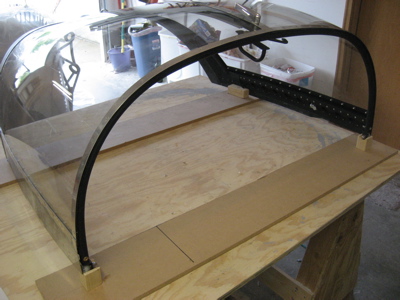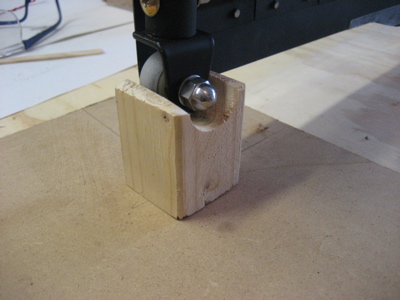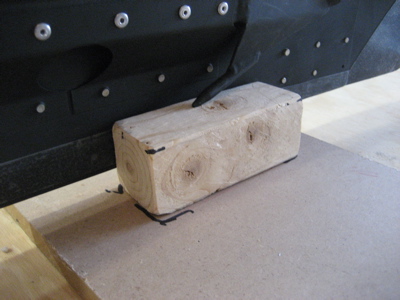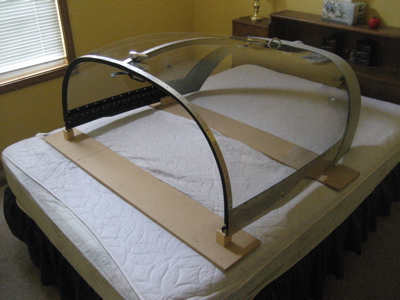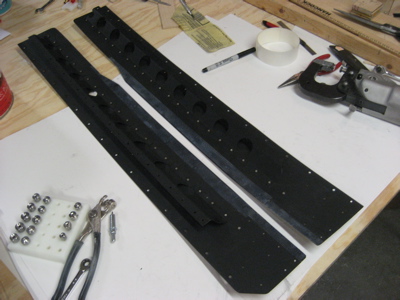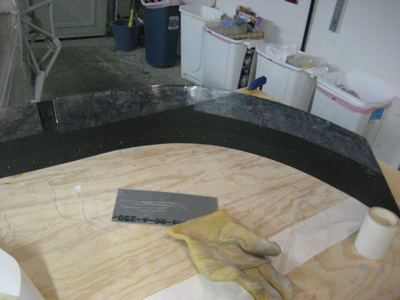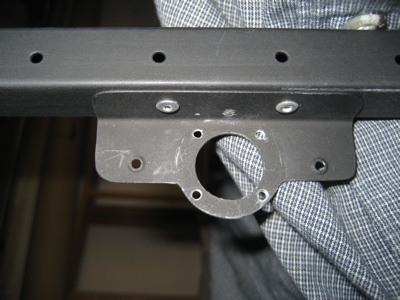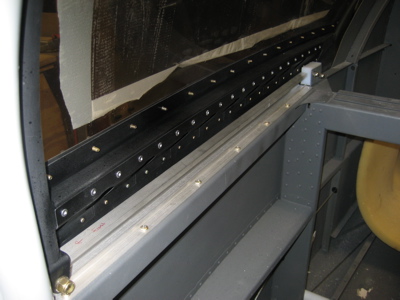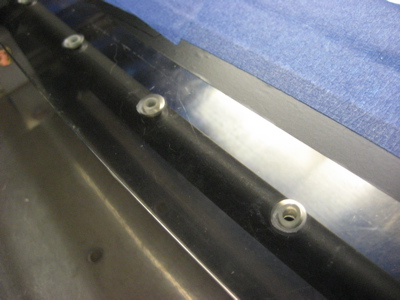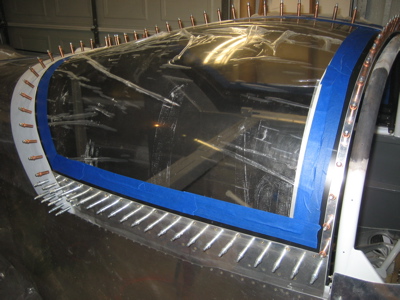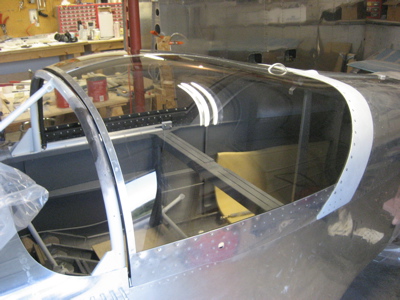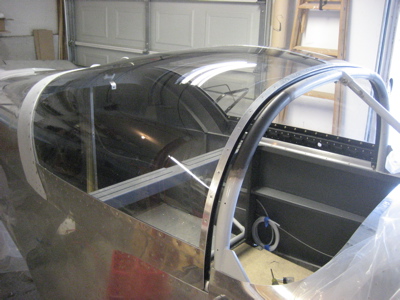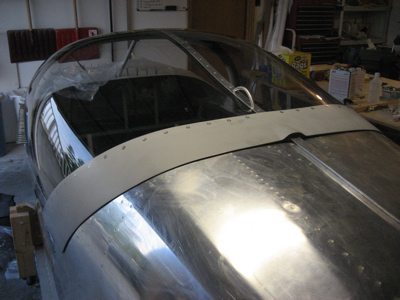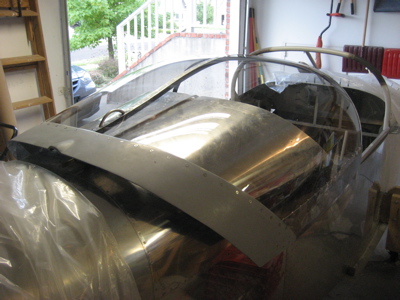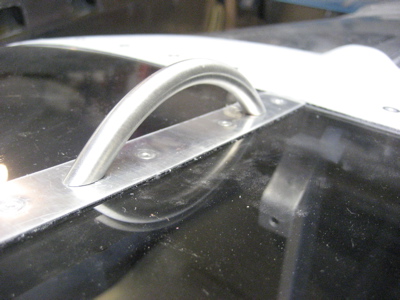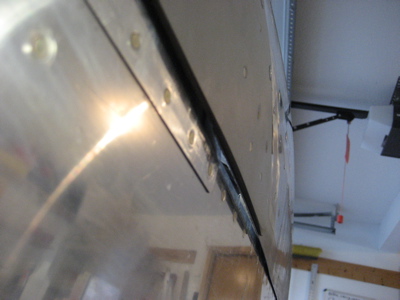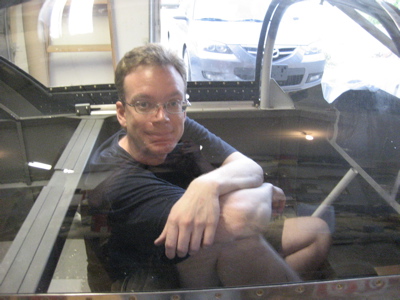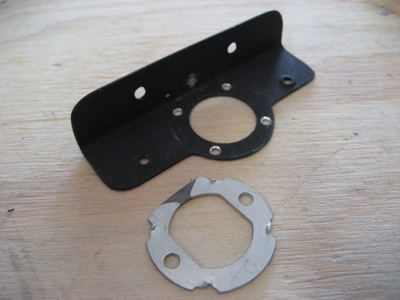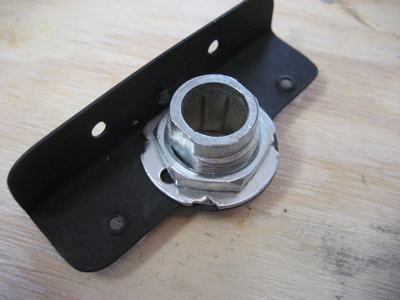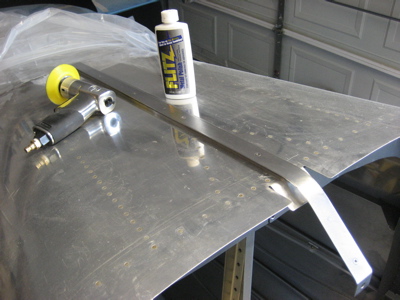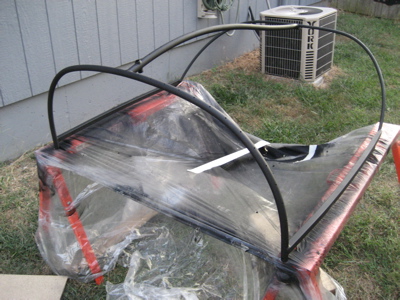A while ago I ordered a nice machined aluminum handle for the exterior part of the canopy latch from Rivethead Aero. They took my payment and then disappeared for a couple months, but after repeated badgering I finally received my latch handle. It's really a work of art, which makes their disappointing customer service even more of a shame.
Anyway, I cut the latch shaft to the proper length after some fiddling and measuring. The handle is secured with a couple of setscrews, and for safety's sake I used a drill to put a couple of little dimples in the steel shaft for the setscrews to bite into. I just didn't feel right about the handle being attached solely by friction. Speaking of which, I used Vibratite on the setscrews, which should hopefully keep them from departing the aircraft.
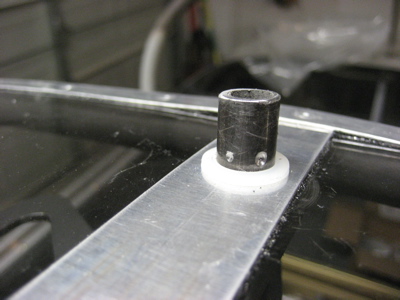
The handle looks awesome:
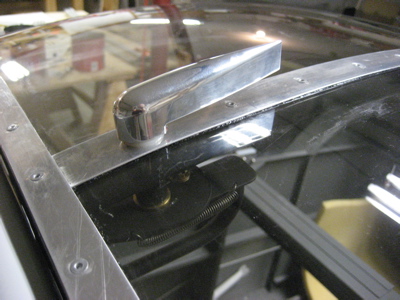
And of course, me being me, I spent a bunch of time fiddling with the alignment of the handle to get it perfectly parallel to the centerline of the fuselage when the canopy is closed and latched.
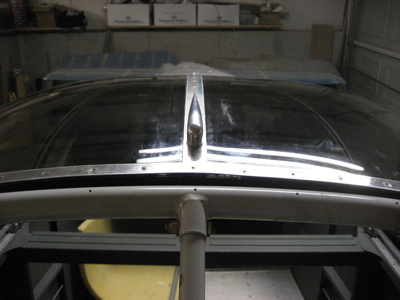
At the forward end of the canopy slide rail, there's a brace that stiffens the overhanging portion against the F-706 bulkhead. The plans show this brace being constructed from a piece of threaded rod and some jam nuts, with a big ugly nylock nut on the end. I have a thing about wanting the interior of my airplane to not look like I built it in my garage, so I decided to dress this area up a bit. I used a piece of aluminum tubing, painted to match the rest of the interior, to cover the threaded rod and make it look a little nicer. At the forward end, I replaced the nylock nut with a swanky looking self-locking stainless steel acorn nut, which is a bit more professional looking.
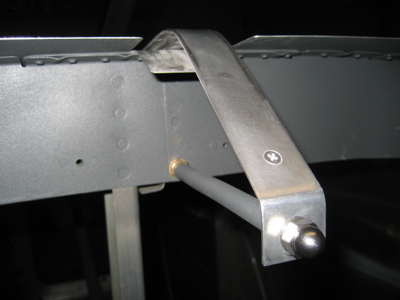
I decided to keep going with the acorn nuts, using them in place of nylock nuts to attach the rollers to the canopy frame, as well as on the screws that act as the axles for the roller wheels.
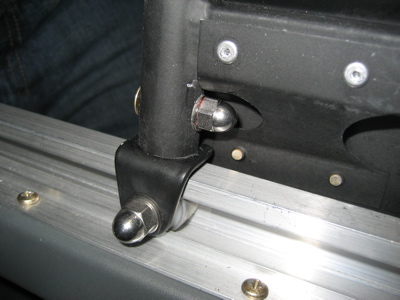
Along the sides, I replaced all the #6 nylock nuts with more acorn nuts. I also used acorn nuts on the interior faces of the C-677 rear pin mounts, although it's hard to see in this photo. Now there are no exposed fastener threads visible on the inside of the canopy whatsoever. This is a purely cosmetic modification, but I really like the way it dresses up the interior.
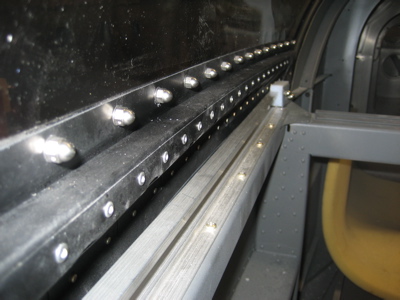
I used Vibratite on all the screws and bolts in the canopy. At one point I had a regular assembly line going:
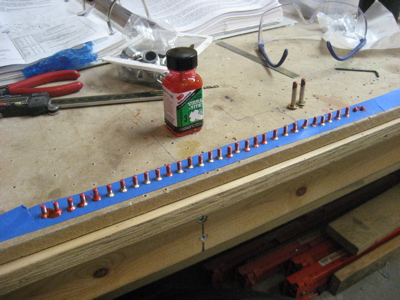
Next, I installed the canopy lock for good:
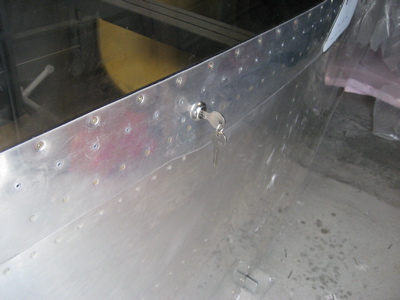
I cut a slot for the lock arm into the canopy track. In its normal unlocked position, the arm points forward, parallel to the track.
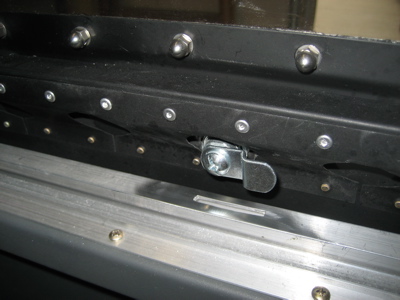
When it's locked, the arm swings down into the slot and prevents the canopy from being slid open more than a small fraction of an inch. Well, unless you were to beat on it hard enough – it's not particularly sturdy.
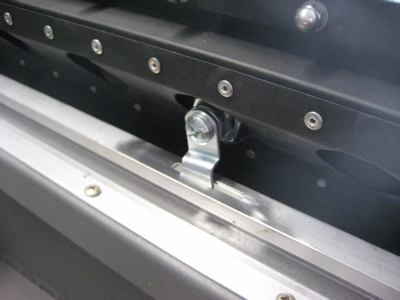
This is a photographic record to remind myself where I stashed the keys:
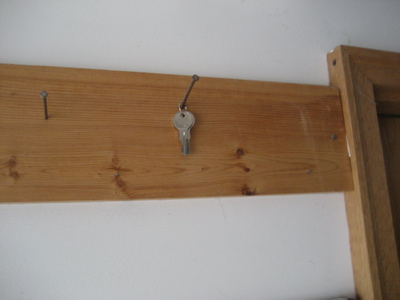
In the spirit of checking off the remaining items on my canopy to-do list, I installed the little track for the canopy shade:
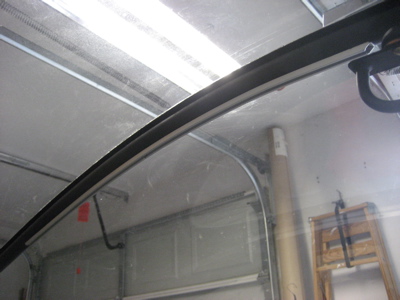
Then I whipped up these little air baffles out of some leftover angle stock, and fitted them to the fuselage and canopy. They'll eventually be painted to match the interior, and will be attached to the longerons with a couple rivets. They butt up against the inside of the side skirts at the rear of the canopy, and will serve to seal up the small gap back there.
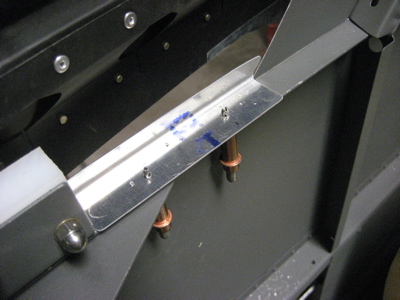
After thinking about it for a few days, I decided to drill out the front two rivets on each side of the canopy, where the leading edge of the fiberglass aft skirt attaches to the side skirts. I replaced the previous 3/32" rivets with 1/8" rivets sitting inside tinnerman washers, which makes me feel better about the rivets not puling through the fiberglass. The airflow is going to try to peel the fiberglass skirt back in this area, so I wanted to beef up the attachment a bit.
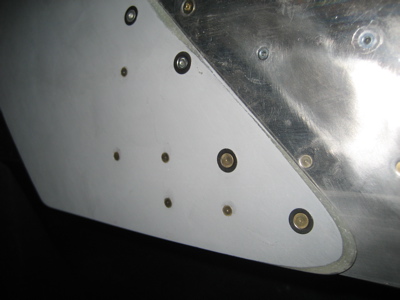
Well, that about does it for the canopy. Next I'll build some kind of a frame or platform to set it on, and stash it in the house so it will stay out of the way and not get scratched.
